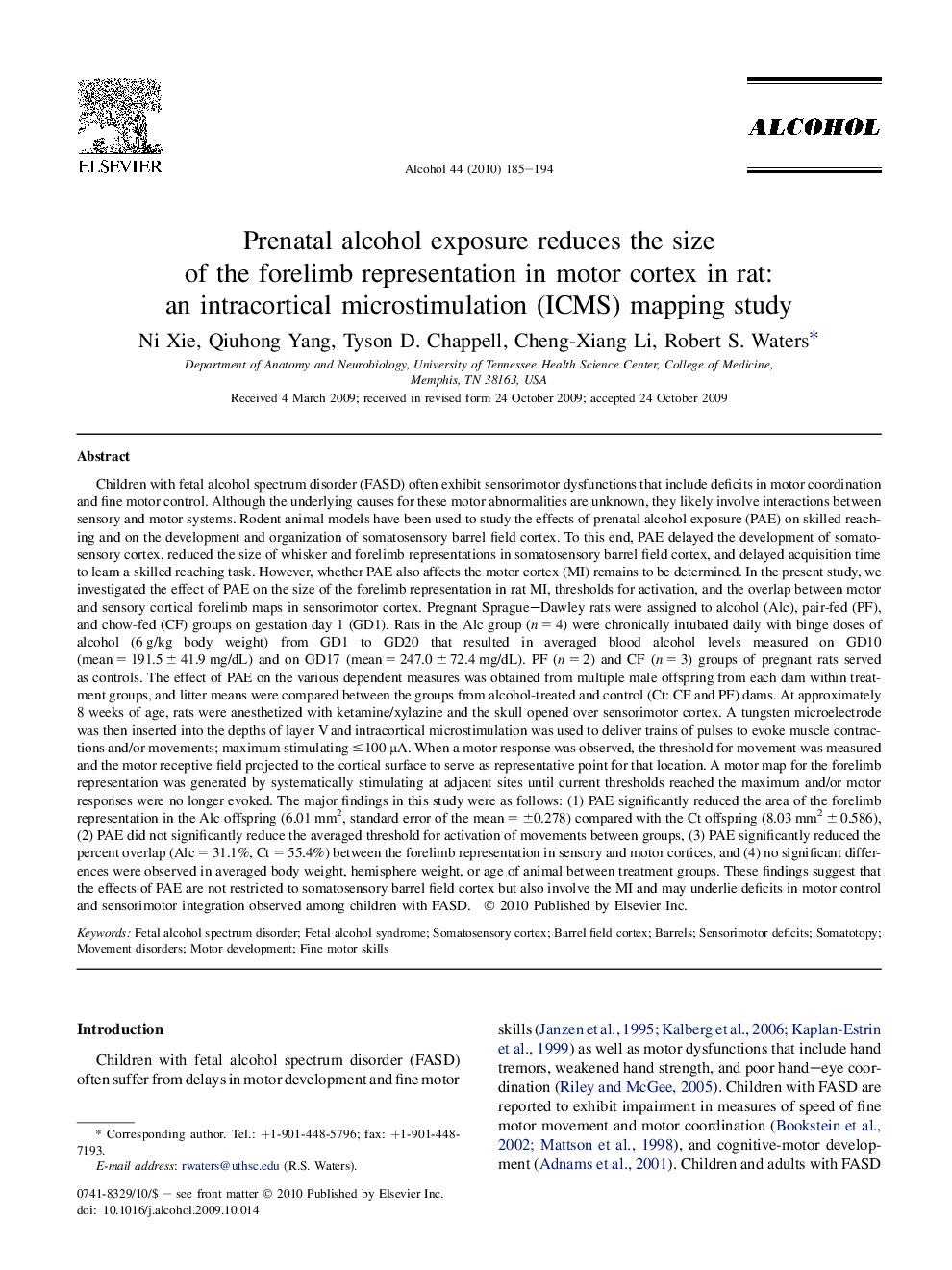| کد مقاله | کد نشریه | سال انتشار | مقاله انگلیسی | نسخه تمام متن |
|---|---|---|---|---|
| 1067720 | 948910 | 2010 | 10 صفحه PDF | دانلود رایگان |

Children with fetal alcohol spectrum disorder (FASD) often exhibit sensorimotor dysfunctions that include deficits in motor coordination and fine motor control. Although the underlying causes for these motor abnormalities are unknown, they likely involve interactions between sensory and motor systems. Rodent animal models have been used to study the effects of prenatal alcohol exposure (PAE) on skilled reaching and on the development and organization of somatosensory barrel field cortex. To this end, PAE delayed the development of somatosensory cortex, reduced the size of whisker and forelimb representations in somatosensory barrel field cortex, and delayed acquisition time to learn a skilled reaching task. However, whether PAE also affects the motor cortex (MI) remains to be determined. In the present study, we investigated the effect of PAE on the size of the forelimb representation in rat MI, thresholds for activation, and the overlap between motor and sensory cortical forelimb maps in sensorimotor cortex. Pregnant Sprague–Dawley rats were assigned to alcohol (Alc), pair-fed (PF), and chow-fed (CF) groups on gestation day 1 (GD1). Rats in the Alc group (n = 4) were chronically intubated daily with binge doses of alcohol (6 g/kg body weight) from GD1 to GD20 that resulted in averaged blood alcohol levels measured on GD10 (mean = 191.5 ± 41.9 mg/dL) and on GD17 (mean = 247.0 ± 72.4 mg/dL). PF (n = 2) and CF (n = 3) groups of pregnant rats served as controls. The effect of PAE on the various dependent measures was obtained from multiple male offspring from each dam within treatment groups, and litter means were compared between the groups from alcohol-treated and control (Ct: CF and PF) dams. At approximately 8 weeks of age, rats were anesthetized with ketamine/xylazine and the skull opened over sensorimotor cortex. A tungsten microelectrode was then inserted into the depths of layer V and intracortical microstimulation was used to deliver trains of pulses to evoke muscle contractions and/or movements; maximum stimulating ≤100 μA. When a motor response was observed, the threshold for movement was measured and the motor receptive field projected to the cortical surface to serve as representative point for that location. A motor map for the forelimb representation was generated by systematically stimulating at adjacent sites until current thresholds reached the maximum and/or motor responses were no longer evoked. The major findings in this study were as follows: (1) PAE significantly reduced the area of the forelimb representation in the Alc offspring (6.01 mm2, standard error of the mean = ±0.278) compared with the Ct offspring (8.03 mm2 ± 0.586), (2) PAE did not significantly reduce the averaged threshold for activation of movements between groups, (3) PAE significantly reduced the percent overlap (Alc = 31.1%, Ct = 55.4%) between the forelimb representation in sensory and motor cortices, and (4) no significant differences were observed in averaged body weight, hemisphere weight, or age of animal between treatment groups. These findings suggest that the effects of PAE are not restricted to somatosensory barrel field cortex but also involve the MI and may underlie deficits in motor control and sensorimotor integration observed among children with FASD.
Journal: Alcohol - Volume 44, Issue 2, March 2010, Pages 185–194